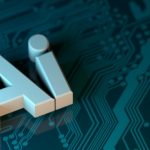Microsoft enters a new fiscal period balancing strong financial results with workforce reductions and strategic shifts towards artificial intelligence. As thousands of employees face layoffs, the company’s leadership seeks to frame its ongoing transition as part of a necessary restructuring to adapt to dynamic industry demands. At the heart of these changes is an intensified focus on expanding AI capabilities within flagship products such as Copilot, reflecting wider ambitions with both economic and organizational implications. These operational shifts have drawn mixed reactions from inside and outside the company, raising questions about the intersection between success, employment stability, and future directions in tech. Many affected workers and industry observers view these developments as indicative of deeper complexities within the global technology sector.
When comparing the current situation to similar large-scale layoffs at other tech giants in recent years, Microsoft’s approach echoes a broader industry trend of reorienting around artificial intelligence, often at the expense of traditional roles. Reports highlight that this is not the company’s first significant workforce reduction, but the combination of profitable quarters with aggressive job cuts remains a notable contrast. Previous announcements focused predominantly on growth narratives or product launches, while current messaging tries to rationalize workforce changes alongside a pivot towards emergent technologies. Public and media scrutiny has intensified around how these dual agendas—corporate prosperity and cost-cutting—coexist, as Microsoft maintains its commitment to cloud and AI investments.
Why Did Layoffs Occur Despite Microsoft’s Strong Performance?
Microsoft’s market performance indicated continuing growth and robust positioning; yet, the decision to lay off about 9,000 employees globally resulted from the company’s reassessment of operational priorities. CEO Satya Nadella addressed the perceived “incongruence” by emphasizing the peculiarities of the technology industry, stressing that even thriving firms must make adaptive changes to maintain relevance in fast-evolving markets. In his words,
“Progress isn’t linear. It’s dynamic, sometimes dissonant, and always demanding.”
This statement underlines the unpredictable nature of technology markets, where shifting consumer demands and strategic pivots can prompt restructuring.
How Is Microsoft Positioning AI As a Core Focus?
The company’s evolving strategy centers on artificial intelligence as a key lever for future growth. Nadella explained that Microsoft aims to reimagine each layer of its technology stack to serve the new generation of AI-driven applications, spanning from infrastructure to app platforms and intelligent agents. He commented,
“We will reimagine every layer of the tech stack for AI—infrastructure, to the app platform, to apps and agents.”
This emphasis suggests that the firm views building and integrating AI tools as essential to its mission, influencing not only product development but the broader organizational culture.
What Role Do Products Like Copilot Play In The Strategy?
Central to Microsoft’s vision is the continued development of AI-powered tools such as Copilot, designed to empower both individual users and organizations to create customized solutions. The company posits that these advancements could foster greater efficiency and innovation in client businesses, positioning Microsoft as a strategic partner in transforming digital workflows. These initiatives are also intended to establish new business models and categories, contributing to the company’s differentiation in a crowded competitive landscape.
Microsoft’s current situation illustrates the complexities inherent in large-scale corporate restructuring, especially against a backdrop of financial stability. Public communication stresses adaptability and a “growth mindset,” recognized as important within company circles but met with skepticism by some observers, who question the human cost of rapid strategic pivots. The focus on AI reflects not just an ambition to lead in emerging technological paradigms, but also a calculated response to industry-wide pressures to innovate amid shifting market structures. For industry professionals and employees, keeping track of these developments may inform career planning and expectations about workplace stability in technology firms. Readers navigating similar environments may find it useful to monitor both high-level strategy and how these directions translate into workforce realities.










